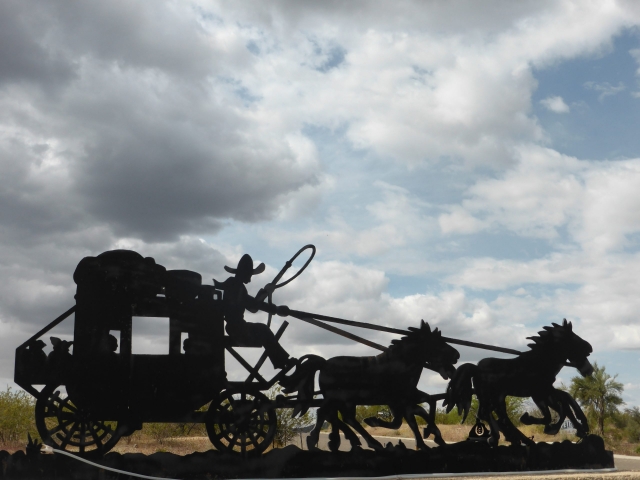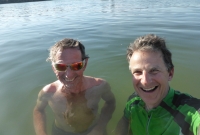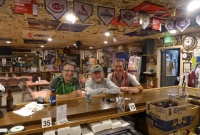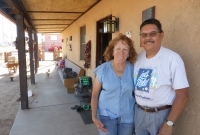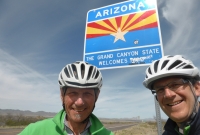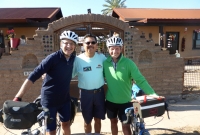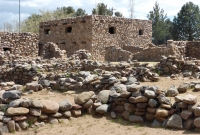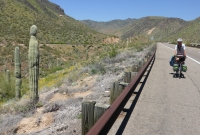When we awoke beneath the trees at the Aztec RV park, the scores of vultures roosting in the two giant eucalyptus were still there, waiting for the sun to warm the thermals and send them spiralling skywards and northwards. By the time we wheeled our bikes across the park and onto the bridge that would take us into town, they were already soaring high above us.
Despite the brilliant set up Bev has created at the Aztec RV park the one thing she’d not been able to arrange was a cessation of the traffic on the nearby 60, which seemed to start up at three in the morning and get ever louder as dawn approached. At one point I was convinced there was a semi manoeuvring right outside the tent. Neither of us slept well, although all the noise and commotion didn’t seem to bother the vultures one jot.

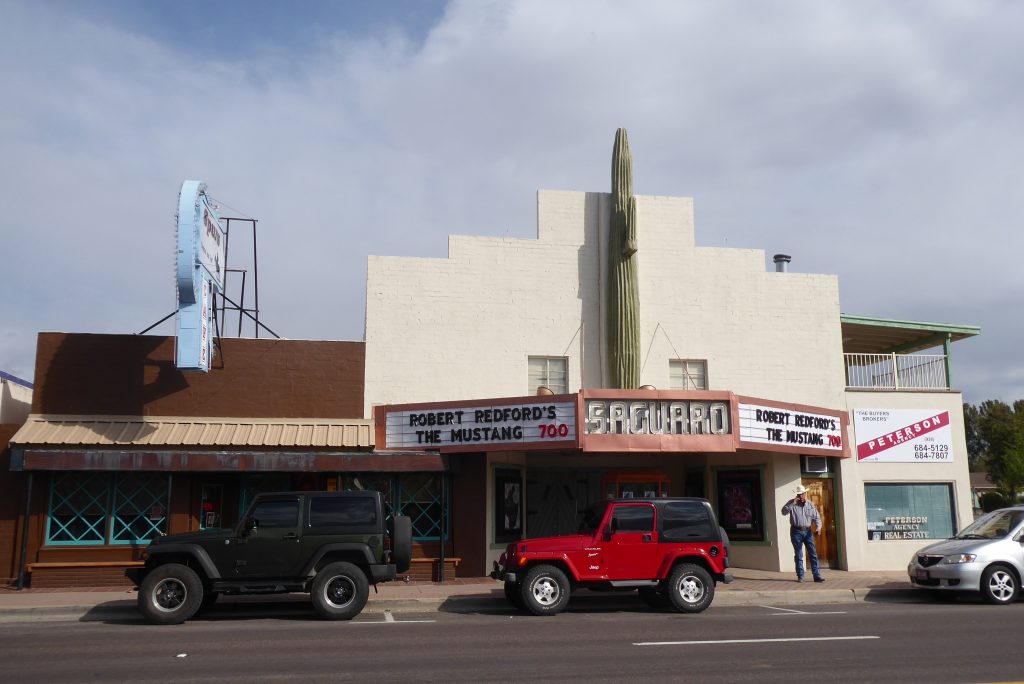
Unusually the river flowing through Wickenburg actually runs underground, but it’s crossed by taking a bridge. Wickenburg has a real cowboy town feel about it – and it’s not surprising. Surrounded by ranch country it holds the title of the ‘Team Rope Capital of Arizona’ and evidence of its connection with horses and cattle was clear to see, from saddleries and gunsmiths to statues of cowboys and men walking around in ten gallon hats. It even had a cinema called the ‘Saguaro’ – how could it be called anything else!
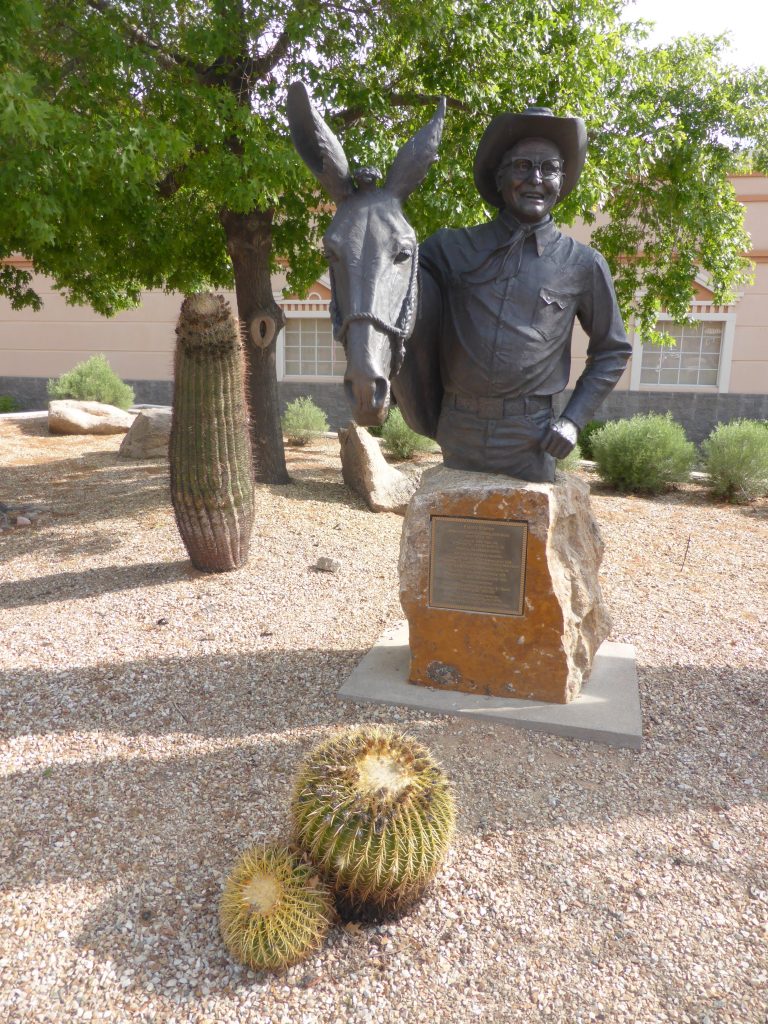
But the reason the town was founded in 1863 was gold. A strike a year earlier on the Colorado River, near present-day Yuma, had brought prospectors running, among them a German named Henry Wickenburg. He founded the Vulture Mine from which millions of dollars worth of gold has since been dug and gave the town his name.


Continuing with the cowboy theme we stopped for breakfast at Deb’s Horseshoe Cafe and parked the bikes next to a rather impressive black and chrome chopperised Harley belonging to the chef and complete with a seatbelt for his ten year old grand-daughter.
“Inside it was all rodeo, ropes and ranch dressings”.
He looked like he’d just walked straight off the set of a 70’s hippy film, a weather beaten, unshaven face with a long white drooping moustache, a red bandana round his head, big buckled belt, jeans and boots. Our waitress had the same characterful face, jeans, boots and a ‘bass ass’ T shirt. Both had big big smiles.
Inside it was all rodeo, ropes and ranch dressings and soon we were tucking into hash browns and sour dough toast, washed down with copious quantities of coffee.
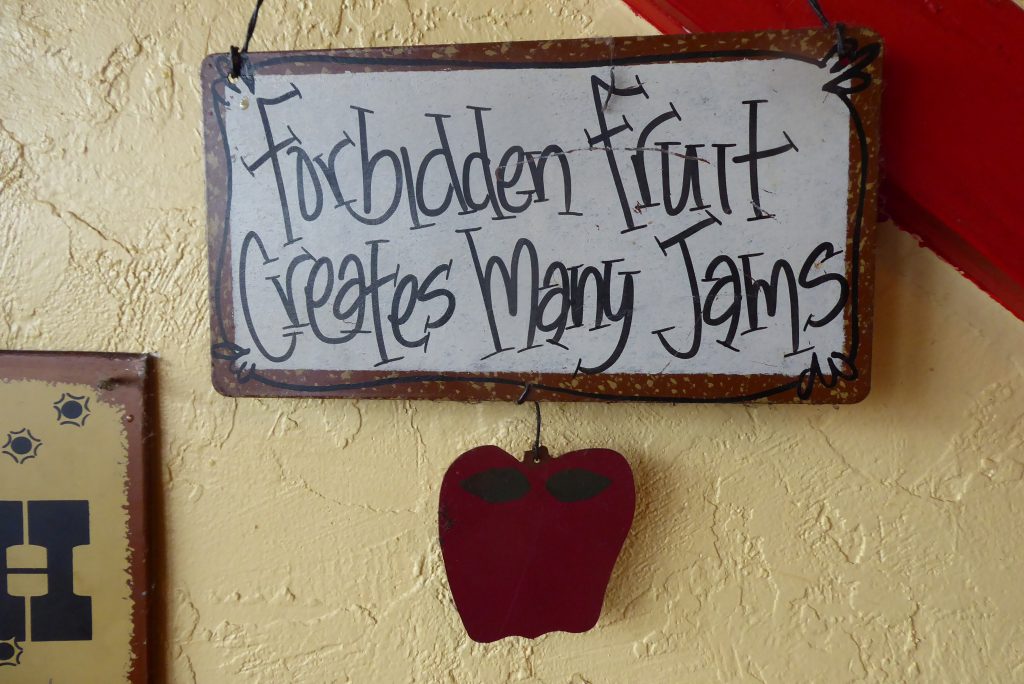
Exploring Wickenberg it was clear this was another town where we could have stayed longer. Of all the towns and smaller cities we’ve ridden through there are very few that would merit staying for an hour or more but there have been exceptions including Martha, Fredericksburg, Pensacola, Globe and of course St Augustine. We could now add Wickenburg to the list.
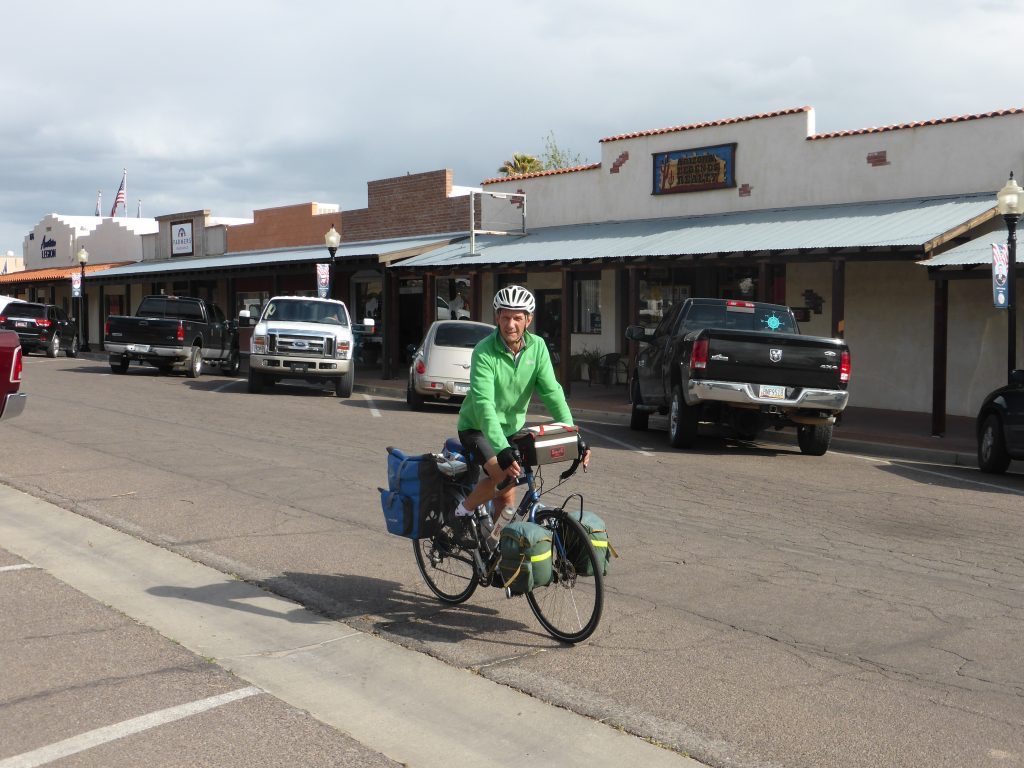
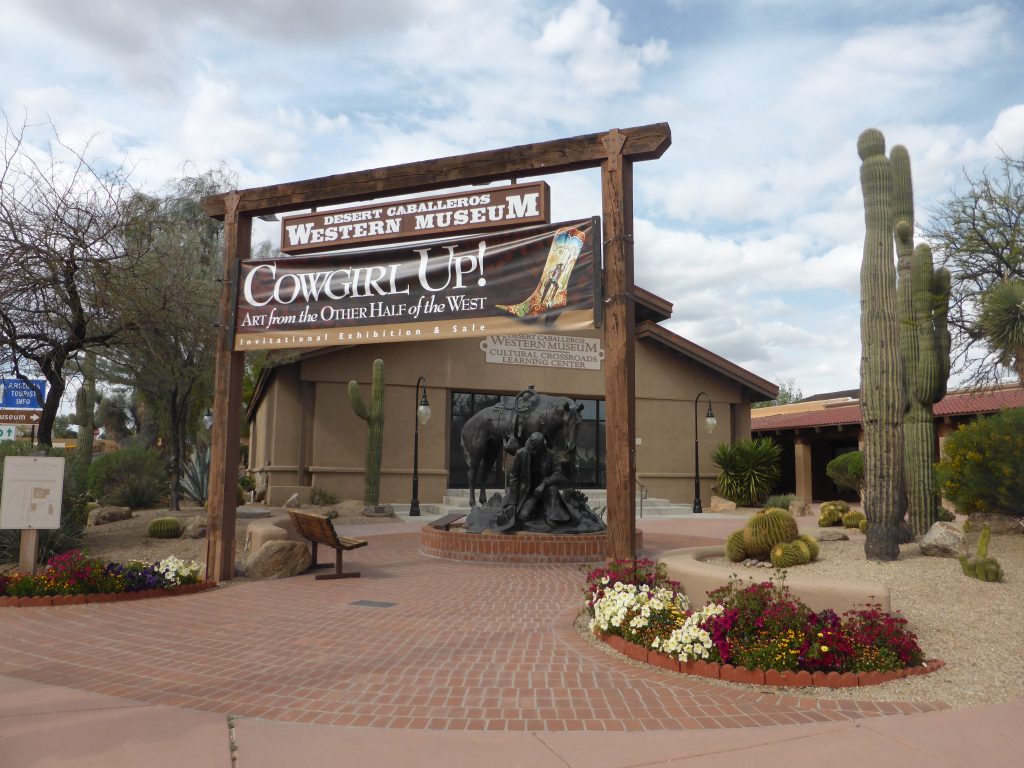
There were at least two museums, numerous historical signs around the place and a preserved steam train dating from 1900. It was also encouraging to see eight new Tesla charging points being installed. Wickenberg appeared to be a town that was not only celebrating its past, but looking clearly to the future. Unusually even the outskirts of town were meticulously neat and tidy – a sign of its wealth, but also a need to keep the tourists happy.
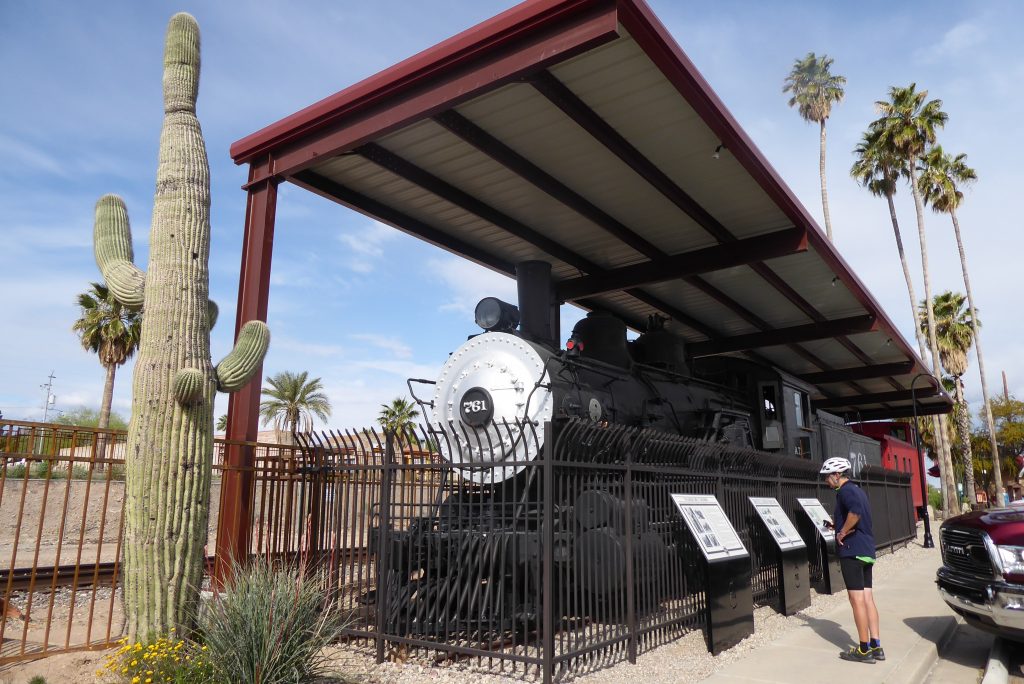
Amazingly as we headed out of town travelling west on the 60 we not only had a cycle lane on the road but also a wide purpose-built path that led out as far as the leisure centre on the outskirts of town. Just across the road was evidence that the town’s past had not always been so rosy.
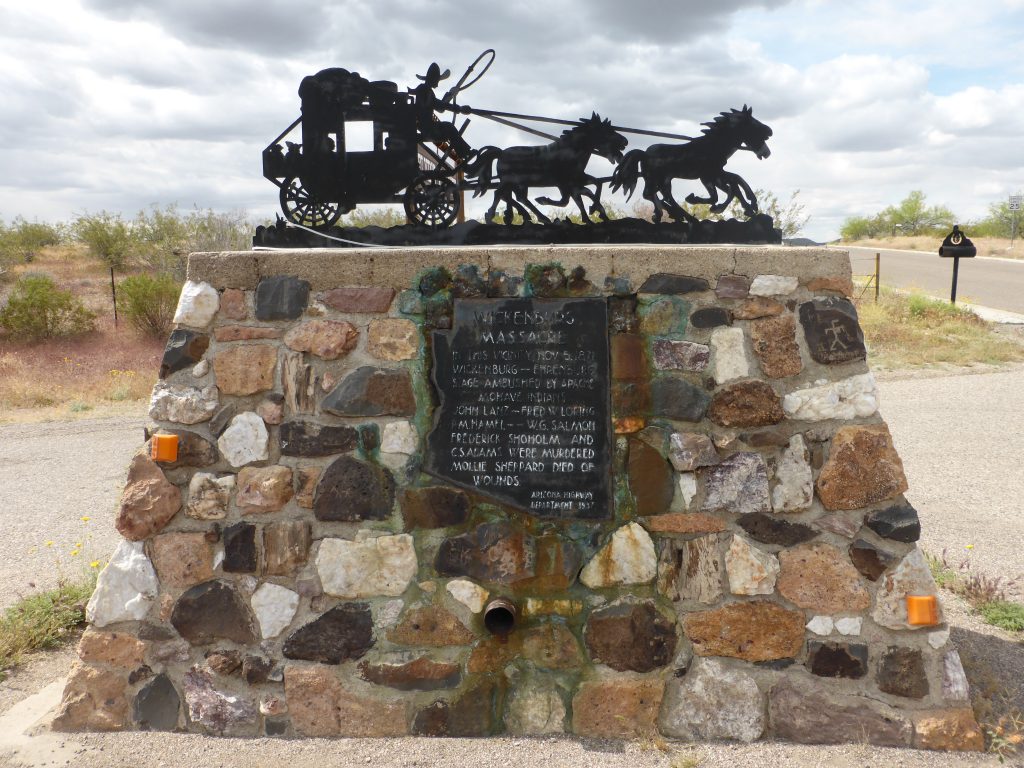
On November 5th 1871 the Wickenberg to Ehrenberg stagecoach had been ambushed by Apache Mohave Indians, leaving seven people dead, including a woman. It is now known as the Wickenburg Massacre and it’s now marked by a small memorial. It seemed extraordinary that this had happened only 150 odd years ago.
“Fortunately there was a gentle easterly nudging on our backs with cool air”.
We were once again riding across a vast plain similar in scale to the one we had crossed on the road into Lordsburg. Fortunately there was a gentle easterly nudging on our backs with cool air and there was none of the stifling heat we’d encountered in previous days.


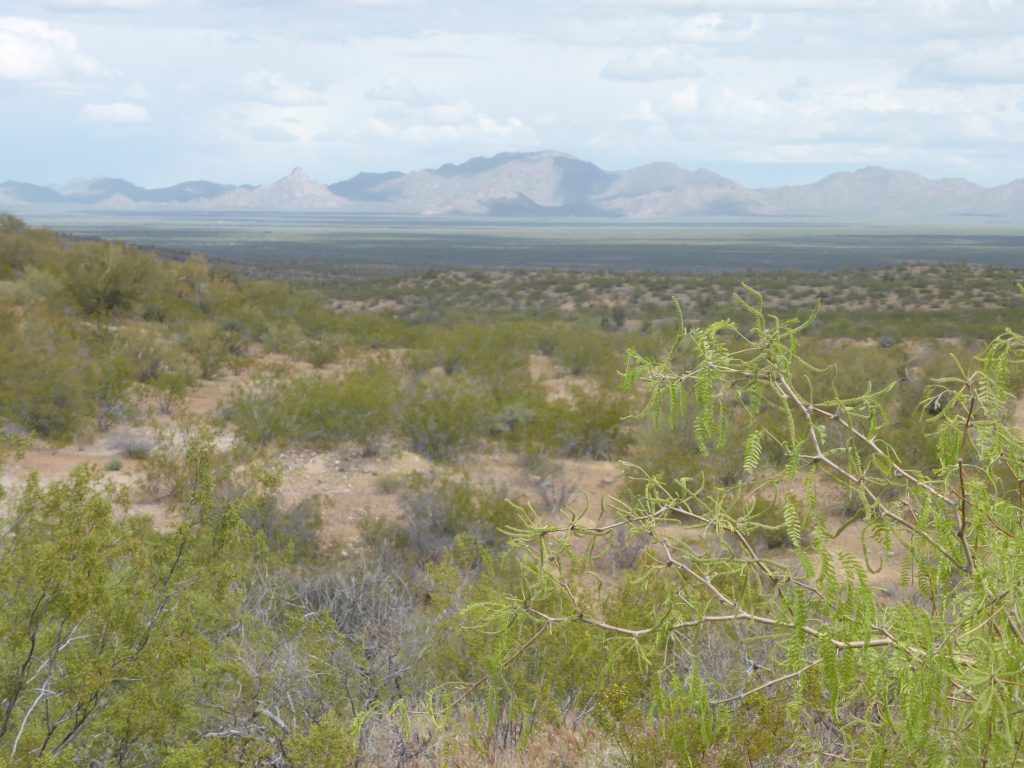
Mountains framed three sides and the desert stretched in all directions for tens of miles. These landscapes that are so vast they just couldn’t exist in the UK. The thought of riding for more than forty miles with no change whatsoever in the scenery is difficult to comprehend.
The trouble is that despite the enormous amount of space it appears starkly devoid of life, yet rather incongruously large yellow diamond shaped signs appeared stating ‘Watch for Animals. Next 20 Miles’.
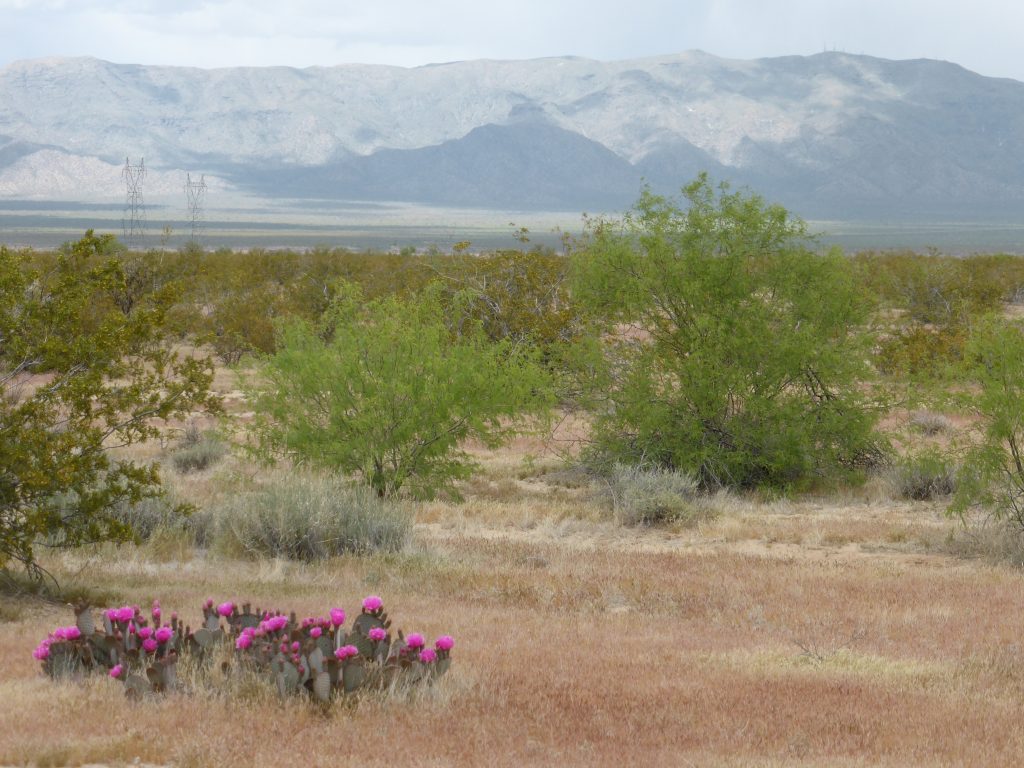
Terry couldn’t decided whether they were there as part of a campaign sponsored by the childrens ‘i-spy’ book publishers as a way to alleviate the boredom on long car journeys (he has a whole range of old ‘i-spy’ books at home somewhere) or a warning that thousands of migrating wildebeest may suddenly come stampeding across the road out of nowhere.
Despite looking wild the whole landscape is fenced, presumably for cattle, but we saw barely a handful all day. There was also no sign of any wild deer and, surprisingly we didn’t even encounter any road kill – not an armadillo, skunk or raccoon, or indeed anything.
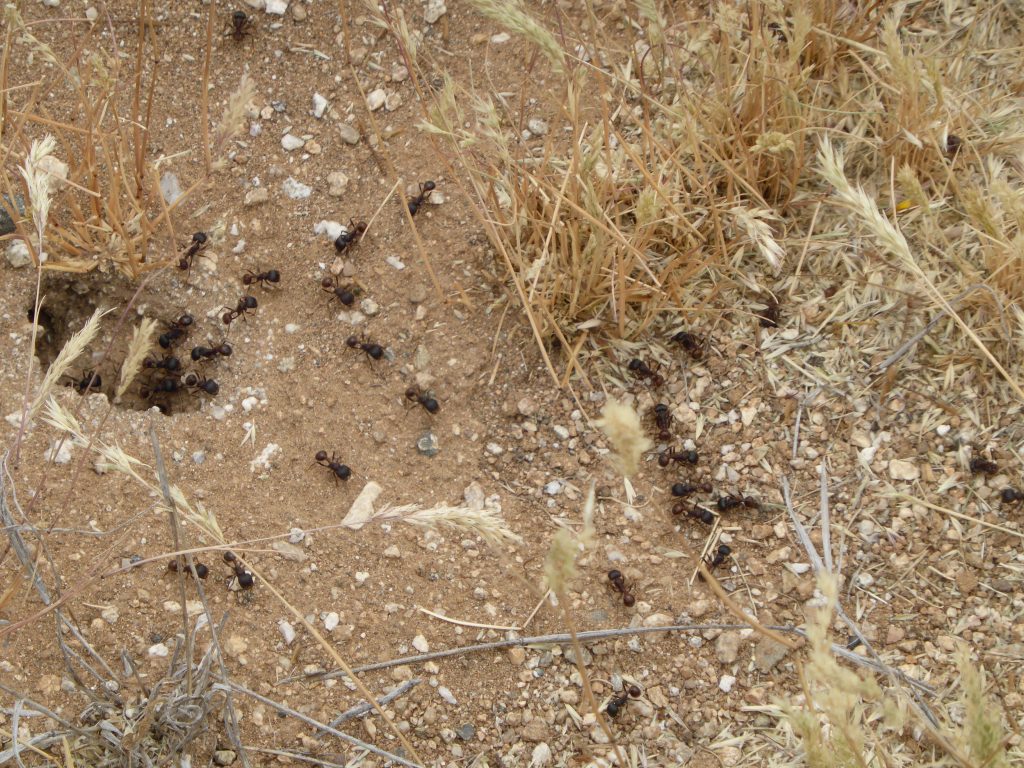
Our i-spy list over the next 20 miles would have made a naturalist weep: one raven, one American kestrel, one mouse, twelve cows (brown and black), lots of ants (several species), three beetles, five butterflies (three species) and a Stegosaurus. Yes, you did read that right, although to be fair it was a sculture welded from steel, but we are counting it, as i-spy will give us a thousand points for dinosaurs.
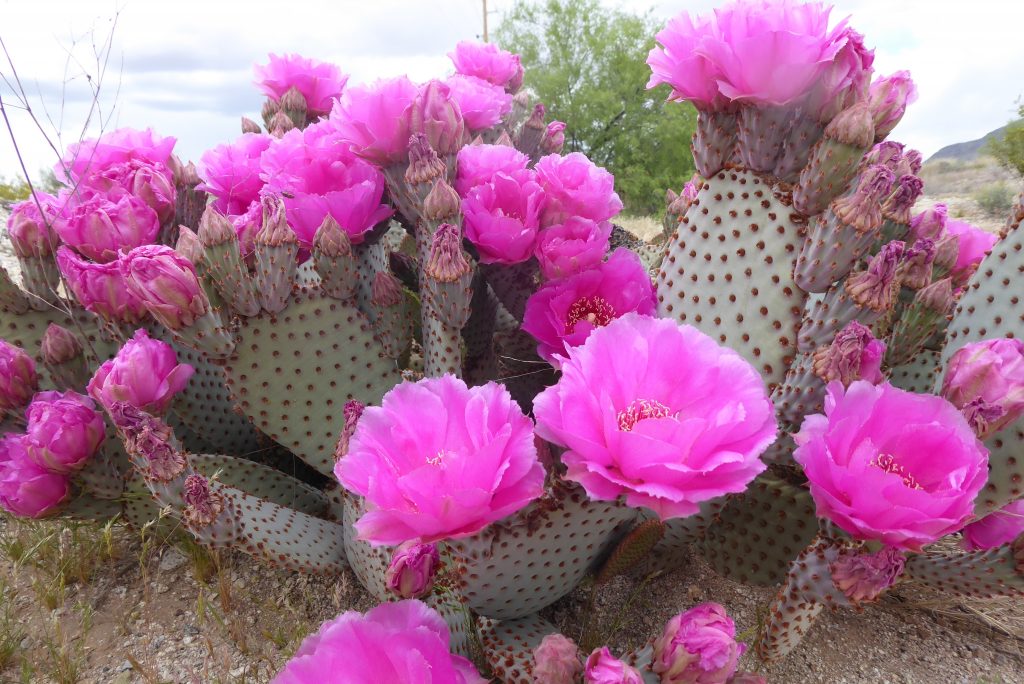
So not great on fauna, but, suddenly the flora started delivering with numerous large cacti ablaze with huge pink flowers that we think might have been prickly pears. Looking for distractions from the road we didn’t hesitate to dump our bikes and take a closer look. And that’s when the desert reveals itself.
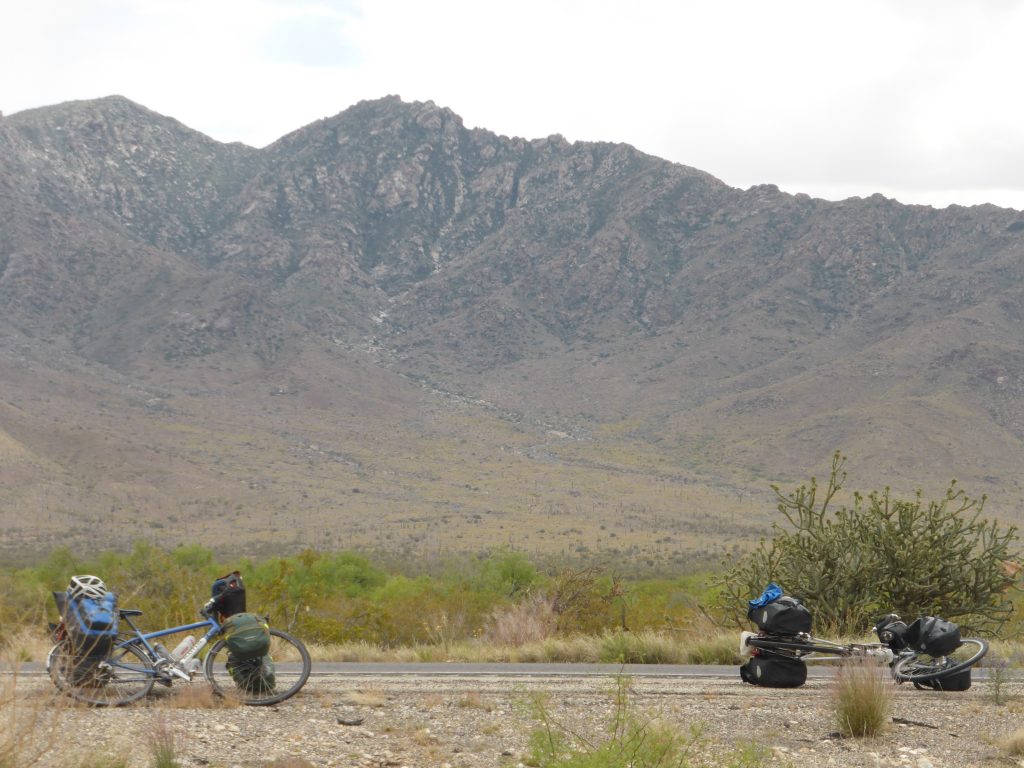
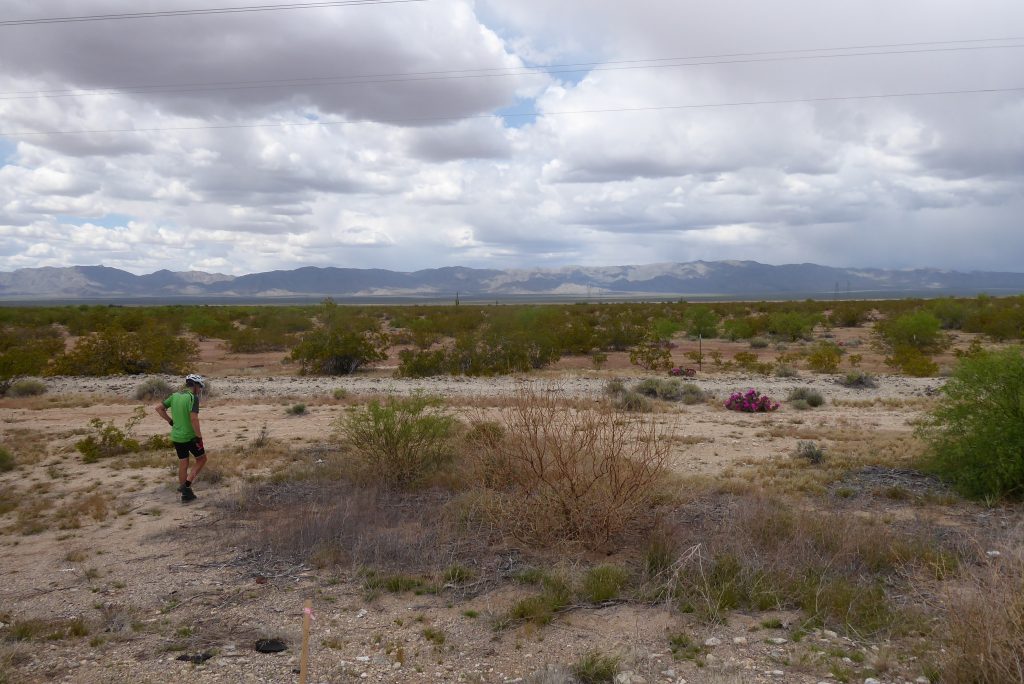

As well as the flowering cactus we also found colonies of ants, mesquite trees, white blooming poppies and any number of plants we couldn’t identify. The lack of animals wasn’t surprising really since most creatures of the desert come out at night, so it was unlikely we were going to see much during the daytime anyway.
While we were going walkabout however we did spot one unusual creature walking towards us on the opposite carriageway – a young woman in the middle of nowhere.
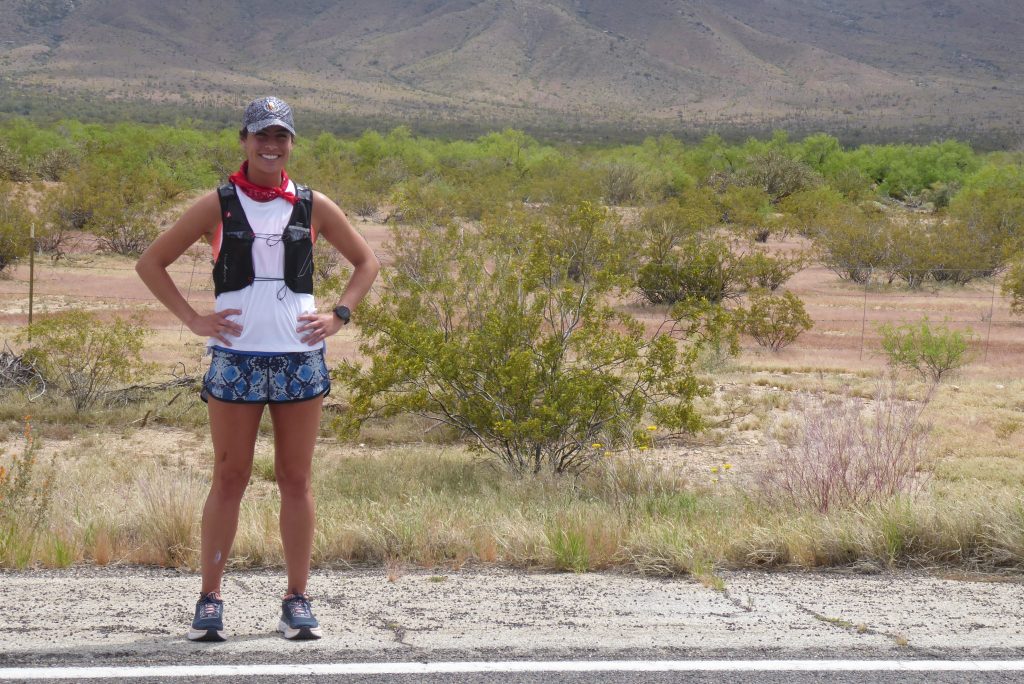
She turned out to be Molly Cuevas, who was walking and running from Santa Monica to New York to raise money for the Challenged Athletes Foundation. She was spending three months covering between 30 and 40 miles a day and was being backed up by her Mum and Dad, best friend and her dog travelling behind her in an RV.
It made our jaunt seem a bit rubbish, even more so when you considered that Lloyd and Lewis, who we met in Texas, are now on the Pacific coast waiting to fly to New Zealand for the next leg of their attempt to enter the record books for the fastest round the world journey by tandem. We are not worthy.
Over the last couple of days the 60West has turned, virtually unnoticed, from a six lane main highway to a two lane country road as it goes through more and more remote settlements. Twenty five miles west of Wickenburg we stopped for white chocolate flavoured coffees in Aguila (population 798) and found pastries in the Mexican grocery store. Other than that, a post office and a bend in the road was all the town seemed to offer.

The great plain lasted until about 10 miles east of Salome when the desert began to be replaced by agriculture. We spotted trees being grown again, which could possibly have been pecans, but appeared smaller in size. Irrigation channels flowed once more and tractors and 4x4s sent swirls of dust curling up into the air. Wenden, five miles before Salome was small, but interesting with a brightly painted courtyard gallery that really caught the eye with its vividly colourful buildings.
Sadly many of the towns we passed through, such as Aguila and Wenden, are shadows of their former selves. In the 30s they became tourist spots with U.S. Highway 60 being part of a transcontinental route to the Pacific. But with the construction of Interstate 10 they were left high and dry in the desert.
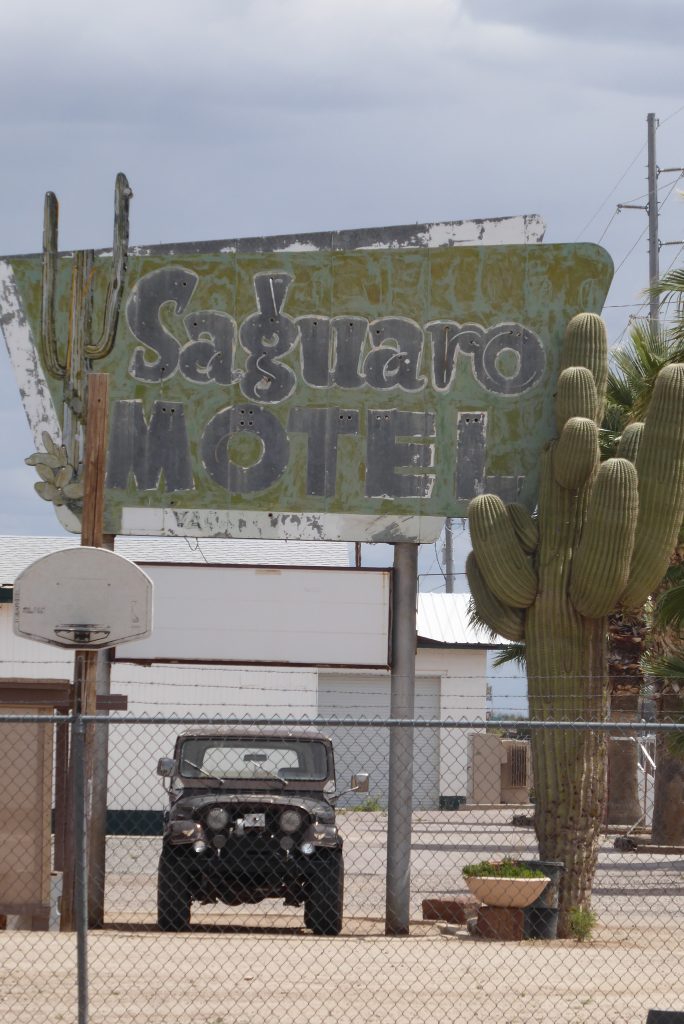
About a mile out of Salome the wind suddenly began to turn from an easterly to a westerly, but by that time the journey was done and we rode into Salome just after 4pm with 56 miles completed. We’d been incredibly lucky with the weather. Throughout the day we could clearly see rain falling in other parts of the valley, but apart from a few spots, which we managed to outride, the day had stayed dry for us.

After collecting supplies we checked into the Voyager Haven RV Park about a mile out of town where we were met by Pat, the friendly owner, who gave us a great spot on flat grass, full access to a lounge/kitchen and showers – and all for $5 each for the night. It was all a bit scruffy, but suited us down to the ground – and there were numerous books to read – including two romantic novels written by Pat herself.
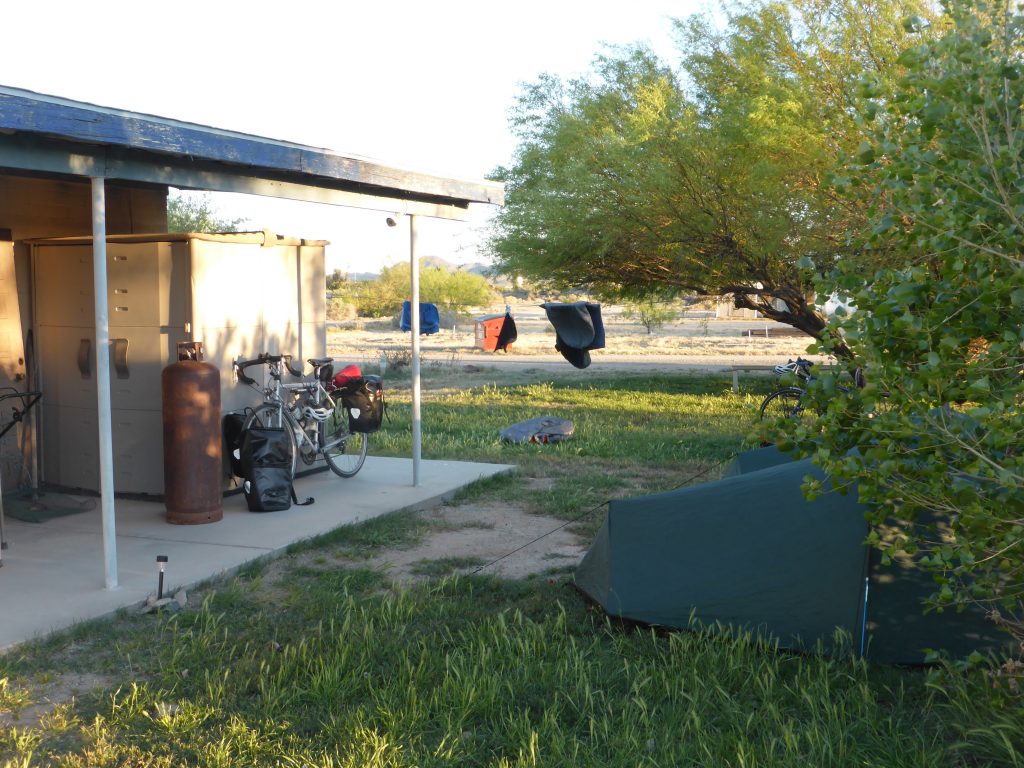
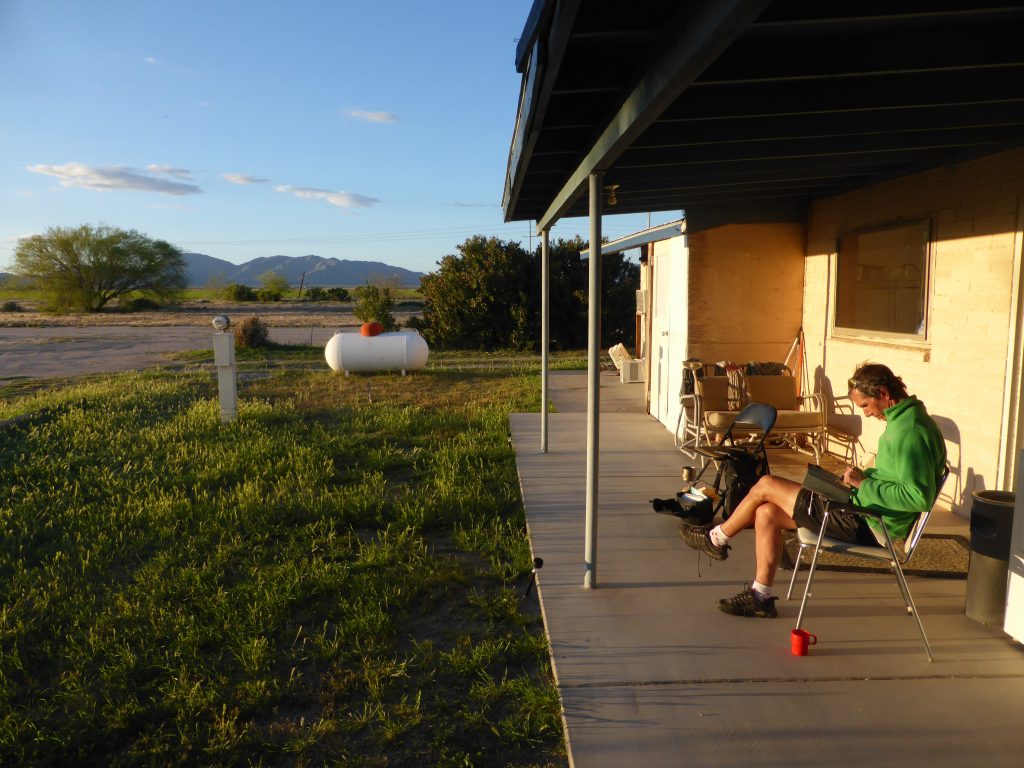
Our host was keen to get out of Salome in a physical as well as a literary sense. Pat was looking to sell the two parks she owned so she could retire and go cruising. And get away from the snakes, no doubt. Did I say snakes? Yep, before she left us she warned us to be on the lookout. There were three types about she said – the Bull and King which were harmless, but also the Rattlesnake, which wasn’t.
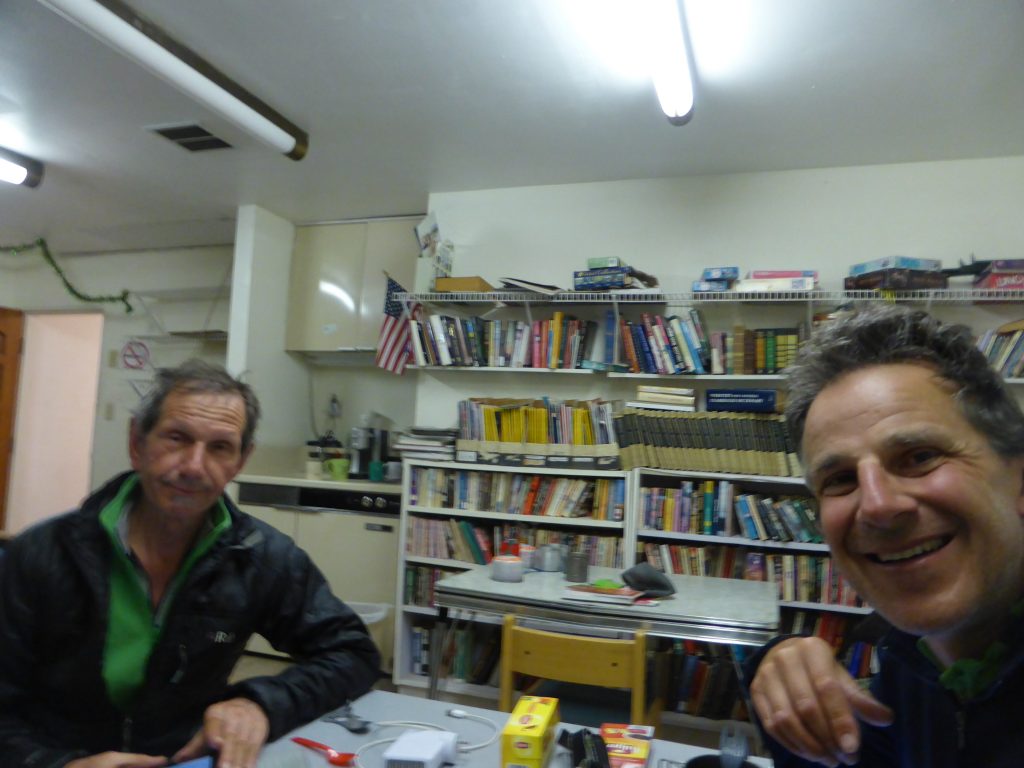
Although her home was just a few yards away she said there were no snakes there on the account of her having cats. We thought about asking if we could borrow a kitty for the night but decided the purring would probably keep us awake, so we entertained ourselves writing our diaries and munching through our food supplies in the ‘library’ before leaving it to the last moment to venture through the snake infested grass to our tents.
Needless to say the zips on the entrances stayed firmly closed all night.
Today’s miles: 56.89
Miles since Anastasia State Park: 2,764.62

